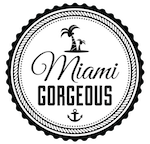What’s the one thing that was drilled into your head whenever the tiniest bit of sun came out? Your mom telling you to put on sunscreen or bathing you in it herself before you stepped out of the house. Well, mom was right, but now there’s even bigger issues, because you can’t just choose any sunscreen and think it’ll be alright.
Common sunscreens typically include ingredients that act as “penetration enhancers” in order to stick to your skin and protect you from the sun. But what’s protecting you from those same chemicals being absorbed into your body? Nothing. You’d be surprised what you’re settling for with common sunscreen brands.
What They Are
Have you ever read the back of a sunscreen bottle? Most other sunscreens use two forms of ingredients: mineral and chemical. Mineral sunscreens use zinc oxide and titanium dioxide, sometimes in combination with chemical filters. They usually rate better.
However, the most common sunscreens on the market contain chemical filters, including a combination of ton of ingredients that you can’t pronounce and/or don’t know of. These include ingredients such as oxybenzone, avobenzone, octisalate, octocrylene, homosalate, and octinoxate. There’s also methylisothiazolinone, which is a preservative referred to as MI, mainly because nobody can spell or say the actual ingredient. Those all sound super natural and safe right? Wrong.
What They’re Doing to You
Lab studies are finding that chemical UV filters have been linked to hormone disruptions and skin allergies. In fact, oxybenzone (one of those super safe-sounding chemicals from before) has been detected in most sunscreens and is the cause of most of these reactions. There’s been alterations to testosterone levels and thyroid hormones that were not there before. Not to mention the fact that there’s increased possibility of endometriosis and that these chemicals can be transferred through breast milk to infants.
So-called “inactive” ingredients make up nearly half of the ingredients in most sunscreen products. MI (there’s no way to correctly spell it twice) was named “allergen of the year” in 2013 after being found in a number of sunscreens and SPF-rated daily moisturizers. It’s also sometimes combined with a related chemical preservative called methylchloroisothiazolinone (which they’ve shortened to MCI, of course.) Now, MI is a common allergy in patients due to the increased skin sensitivity of its users.
How many times do you have to reapply sunscreen on day in the sun? A lot, especially if you’re sweating or in and out of the water. That’s reapplying those same chemicals in large portions of your body, which means increasing the exposure to the side-effects of using a chemical-based sunscreen.
It’s safe to say that the risk of what these chemicals in sunscreens are doing to you outweighs the benefits of sun-coverage.
What You Can Do About It
Pay attention to what you’re buying. Look past the typical sunscreen brands because they’re not worth it. Natural, non-nano zinc sunscreen is the best because the risks associated with chemicals and nanoparticles are not present. You can pronounce all of the ingredients, and they’re recognizable to you because they weren’t cooked up in a lab somewhere. There’s no need to settle for common brands now that you know what’s really in them, right?
Who says that you need to choose between being bronzed and being healthy? It’s possible to protect yourself from the sun without damaging your skin and health. Go natural with non-nano zinc, and feel free to apply multiple layers. Sun-kissed and smart about your skin. That’s something that your mom would be proud of.
Miami Gorgeous Zinc SPF Sun Stick promises it is safe and has no "yucky" chemicals found in many others on the market.
We only use Zinc and pair it with organic ingredients pure vitamins to be the healthiest sunscreen option. The ingredients we use are organic making it a safe choice.
